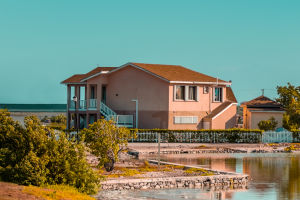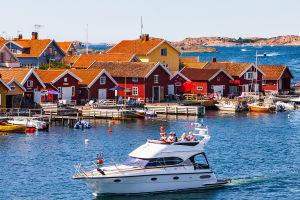Lykkers, Tokyo becomes a vibrant spectacle from late March to early April, as cherry blossoms (sakura) bloom across the city. The annual cherry blossom season is one of Japan's most celebrated events, attracting both locals and tourists alike.
In 2025, the cherry blossoms in Tokyo are expected to reach full bloom around March 22, with the peak lasting for about 7 to 10 days afterward. During this period, visitors can enjoy breathtaking views of sakura-lined streets, parks, and rivers, creating a truly unforgettable experience.
Tokyo
Where to See Cherry Blossoms in Tokyo
Tokyo offers numerous spots to admire the cherry blossoms, ranging from famous locations to hidden gems. For those seeking a more immersive experience, attending one of the many cherry blossom festivals held in the city is highly recommended. These festivals provide a chance to enjoy both the beauty of the sakura and the lively atmosphere of the celebrations.
1. Nakameguro Cherry Blossom Festival
Nakameguro is a trendy, peaceful area known for its stylish cafes and shops. However, during the Nakameguro Cherry Blossom Festival, the Meguro River transforms into a picturesque scene with 800 cherry trees lining the riverbanks.
The festival features food stalls, lanterns, and a festive crowd, all set against the backdrop of the delicate pink blossoms. The illuminated cherry trees along the river create stunning reflections, perfect for memorable photographs.
2. Rikugien Gardens: Night Sakura Viewing
Rikugien Gardens is an exceptional location for both daytime and nighttime cherry blossom viewing. The “yozakura” (night sakura) experience at Rikugien offers visitors a chance to admire the cherry blossoms under soft, enchanting lights.
One of the most famous trees here is the weeping cherry tree, which cascades with pale pink flowers, creating a mesmerizing atmosphere. The garden holds special nighttime events from mid to late March, allowing guests to enjoy the blossoms in an ethereal setting.
3. Sakura Fes Nihonbashi 2025
Nihonbashi, an area steeped in history and known for its luxury shopping and financial center, is also home to the vibrant Sakura Fes Nihonbashi festival. Between mid-March and early April, the district celebrates sakura in various creative ways.
Restaurants and shops in the area offer Sakura-themed menus, and special sweets, bento boxes, and snacks are available. Don’t miss the pink-lit buildings along the Edo Sakura-dori and Chuo-dori streets, and the sakura lanterns in the Coredo Muromachi Terrace.
4. Bokutei Sakura Matsuri Festival
The Sumida River, stretching through the eastern part of Tokyo, is another prime location for cherry blossom viewing. During the Bokutei Sakura Matsuri Festival, held from mid-March to mid-April, visitors can stroll along the riverbanks and enjoy the beautiful cherry blossoms, with food stalls and cafes set up along the way.
The illuminated flowers and the view of the Tokyo Skytree in the background create a striking contrast, making this a unique spot to witness the sakura in full bloom.
5. Chiyoda Cherry Blossom Festival
Located just north of the Imperial Palace, Chidorigafuchi is a serene path lined with cherry trees. During the Chiyoda Cherry Blossom Festival, held annually from mid-March to late April, the trees are illuminated at sunset, creating a magical atmosphere. Visitors can also rent rowboats to view the sakura from the water, offering a picturesque perspective of the blossoms.
6. Ueno Sakura Matsuri
Ueno Park is one of Tokyo’s most popular green spaces, and it is famous for its cherry blossoms. The park’s main street, lined with cherry trees, attracts large crowds each year for the Ueno Sakura Matsuri, held between mid-March and early April. In addition to the cherry blossoms, Ueno Park is home to museums, a zoo, and a tranquil pond, making it a wonderful place to spend a day during the sakura season.
7. Koganei Cherry Blossom Festival
The Koganei Cherry Blossom Festival takes place at Koganei Park and the Edo-Tokyo Open-Air Architectural Museum at the end of March. This festival offers a cultural experience alongside cherry blossom viewing, with over 1,400 cherry trees of 50 different varieties.
Various performances, including traditional music and taiko drum shows, add to the lively atmosphere. Visitors can also enjoy local snacks from food stalls, making it a delightful outing for both nature lovers and culture enthusiasts.
Opening Hours and Ticket Information
Most cherry blossom viewing spots in Tokyo are free to visit, but some festivals and parks may charge an entry fee for special events or nighttime viewing.
For example, Rikugien Gardens charges a small admission fee for its special nighttime sakura viewing events. Opening hours for parks and gardens typically range from 9:00 AM to 5:00 PM, with extended hours during special events. For those attending festivals, it is recommended to check specific event dates and times, as they can vary each year.
Conclusion
Tokyo’s cherry blossom season is a must-see spectacle for any visitor. From peaceful parks to bustling festivals, there are countless opportunities to experience the beauty of sakura in Tokyo.


